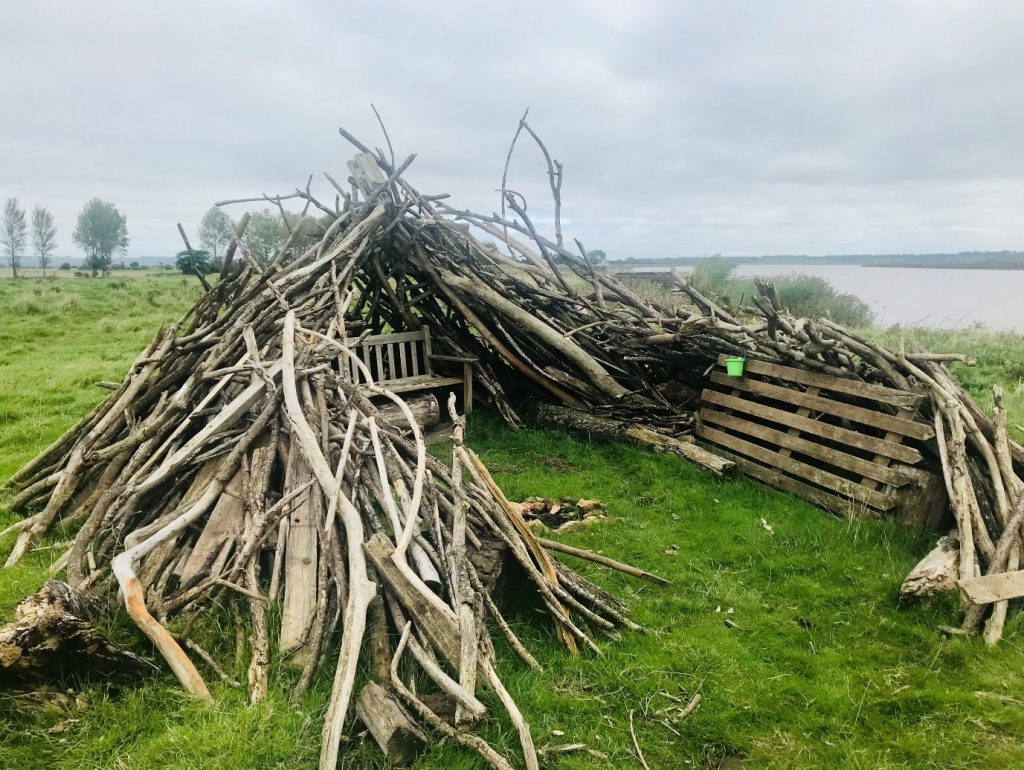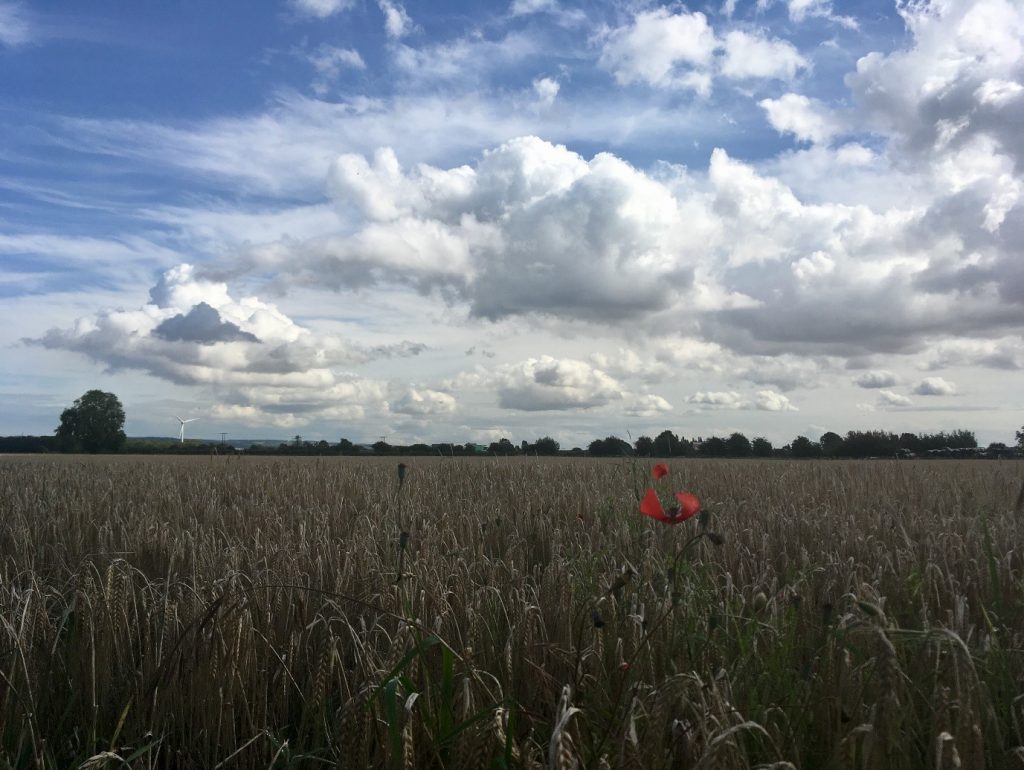Briony McDonagh, Professor of Environmental Humanities, University of Hull
As part of the University of Hull Alumni Olympic Challenge, colleagues in our Alumni Office have challenged former students and staff at the University to walk 40 miles over the course of the Summer Olympics (23rd July to 8th August 2021). We’d love you to join the challenge at #HumberWalk21 (and/or #HullAlumni). This might take place anywhere that suits you, wherever you live in the UK or globally. Doing the walk and covering the miles is the important thing!
Our walk is imaginatively set along the Humber Estuary, a familiar sight both to our alumni and to the local communities we work with as part of the Risky Cities project (find out more about this project below). 40 miles represents the distance between the confluence of the rivers Ouse and Trent (and the start of the Humber Estuary) and Spurn Point, where the estuary waters meet the North Sea. It’s a journey I’ve undertaken over the last 18 months, walking short sections of the north bank of the Humber when possible under national lockdowns – and when not on crutches as a result of Joe Wicks lockdown PE (true story!).

In bringing you a series of blog posts to accompany your own 40-mile walk, I’ll be sharing some of my own reflections on my research as a scholar of the environmental humanities working alongside colleagues from across the physical and environmental sciences, social sciences, humanities and arts. Many of those colleagues have also kindly agreed to share their own thoughts and reflections on their research sites and projects located along the Humber shoreline.
In this blog series, I’ve returned to an idea first explored in a public talk I did a few years ago – of walking the Humber shore accompanied by a variety of experts. In 2018, I was very pleased to be asked to serve as a Geography Section President for the British Science Association. At the British Science Festival held in Hull that September, I delivered my Presidential Address titled At the Edge of the Humber. I spoke about how the Humber is – and always was – a hugely dynamic environment and explored the ways that people living and working along its margins have constantly negotiated changing relations between the land and water – a task today made all the more pressing in the face of an uncertain future climate. As I said in my talk,
“In what follows, we’re going to journey from river to estuary to sea. We’ll be traversing the so-called Humber Wetlands, moving through what literary scholar Hillary Eklund has recently called ‘unfast lands’, places where land and water mix, where what was one day solid ground might soon be mud and water, where reeds and marsh and wood and water intermingle. In charting this course, we’ll move through a range of watery topics including issues of water management, flooding, wetlands commons, drainage and reclamation in the medieval, early modern and modern periods – and the contemporary world.”
Each section of the walk is accompanied by one (or more) blogposts written by colleagues from a variety of disciplines. We’ll hear from physical and human geographers, poetry scholars and environmental scientists, climate experts and social scientists, all exploring a particular section of the Humber shore – and thus dramatically expanding on the range of topics covered in my original keynote.
Every week there will be one or more new blog post available on the Risky Cities website and via the Alumni pages and groups to accompany and inspire your journey. Please do join us – walk, tweet (#HumberWalk21) and send us photos, comments and questions. We’d love to hear from you!
So, let’s start our journey at Trent Falls.
Trent Falls
Here the waters of the rivers Ouse and Trent meet to form the Humber Estuary. This has long been a wet and waterlogged corner of the East Riding of Yorkshire, and the communities living on the margins of the Humber have long lived with water and flood.
To the north-west of Trent Falls lies Wallingfen. Described by Arthur Young in 1769 as ‘low, flat and disagreeable’, Wallingfen was a large wetland common which ran in a broad arc from Howden in the west to North Cave and South Cave in the east. It was bounded to the north by the River Foulness (brilliant name!) and to the south by the settlements located along the slightly higher land bounding the northern shore of the Humber. Until enclosure in the 1780s, it was managed via an unusual – read: near unique – cooperative system of wetland management known as the court or commonalty of Wallingfen.

The court of Wallingfen is first documented in c. 1425, but almost certainly existed earlier. I and medieval historian Prof. David Crouch argued in a 2016 paper that the court most likely came into existence in the 1280s. It kept detailed records, some copies of which survive in the Hull History Centre. The court managed the wetland grazing rights in the fen as well as oversaw works to reduce flood risk, for example, by building flood banks and scouring drains.
Interestingly, the court seems to have been broadly successful in protecting the fen from flood. Wallingfen was still inundated annually until enclosure, but the summer grazing season (the period it was dry enough to safely graze animals in the fen) lengthened from two months in the early fifteenth century to more than five months in the late sixteenth century. Presumably at least partially as a result of the court’s actions (and those of the commoners and other landowners with which it worked).
Here the fortuitous survival of medieval court records allows us to see something of the early flood management strategies in the Humber. It also offers us insights into the ways some medieval and early modern communities learned to successfully live with water and flood, even whilst we know others – for example, downstream in Hull – continued to experience destructive flooding.
Humber communities are, of course, still vulnerable to flooding, as the serious flood events of 2007 and 2013 demonstrate. We continue to live on the edge, so to speak – a theme we’re exploring in our current Risky Cities project and one we’ll return to in later blogs as we progress eastwards along the Humber. Please do join us on the journey!
Want to know more?
You can read about our research on wetlands commons governance and early flood risk management in Wallingfen in the Agricultural History Review. Download a free PDF of my and David’s article here.
Or you can learn more about our Risky Cities project on our website.
Risky Cities: Living with Water in an Uncertain Future Climate is funded by the Arts and Humanities Research Council and part of the UK Climate Resilience Programme. The project uses innovative arts and humanities approaches to build climate awareness and help communities become more flood resilient, today and for the future. More specifically, it gathers histories and stories of flooding from one flood-prone city (Hull) and uses them in community-based arts and heritage interventions as well as large-scale cultural productions developed in collaboration with project partners, including Absolutely Cultured and the National Youth Theatre. You can watch a short film about the project below and sign up for our mailing list here.
You can also follow me or the Risky Cities project on twitter: @BrionyMcDonagh @Risky_Cities
